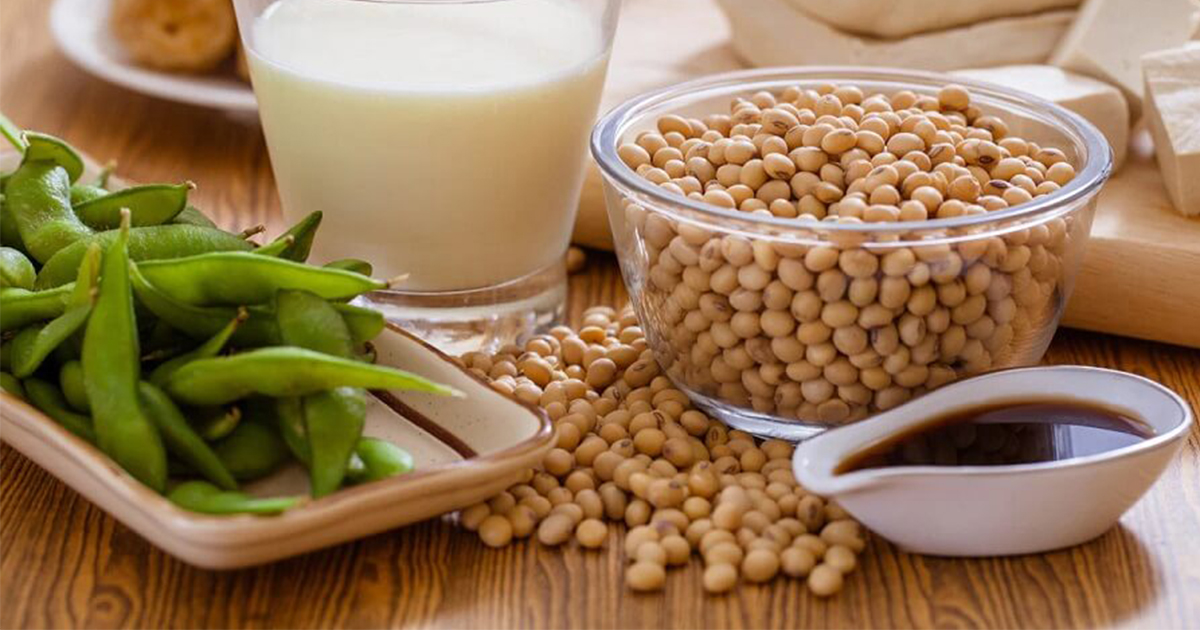Have you ever seen the word “soy lecithin” on the back of a food package? It’s a common ingredient, but many people don’t know what it is or why it’s there. As an ingredient in many packaged foods, some of my clients assume it can’t be good, while others have conspiracies about anything soy related. Let’s clear up the confusion and uncover the truth about this misunderstood ingredient in a simple way!
What is Soy Lecithin Made From?
Soy lecithin comes from soybeans. Soybeans are tiny beans that grow on plants. They are full of nutrients and are used to make many foods like tofu, soy milk, and soy sauce. To make soy lecithin, a part of the soybean called the oil is processed to take out a substance called lecithin.
What Does Soy Lecithin Do?
Soy lecithin is like a helper in food. It helps ingredients mix better. For example, oil and water don’t usually mix, but soy lecithin can make them stay together. This is why it’s often added to foods like chocolate, salad dressing, and baked goods. It helps keep the food smooth and creamy.
Is Soy Lecithin in Supplements?
Yes, soy lecithin is often found in supplements, especially soft gels. It is used as an emulsifier to help keep the ingredients in the capsule evenly mixed. For example, soft gels containing fish oil, vitamin D, or other liquid supplements may use soy lecithin to maintain their texture and prevent separation of the ingredients. As with food, the amount of soy lecithin in supplements is very small and is considered safe for most people. If you are concerned about consuming soy or have a soy allergy, check the ingredient list on the supplement label or consult with your doctor.
Is Soy Lecithin Safe to Eat?
Yes, soy lecithin is safe for most people to eat. It is used in very small amounts in food. However, if someone has a soy allergy, they might need to be careful. The good news is that soy lecithin usually doesn’t have enough soy proteins to cause an allergy problem, but it’s always good to check with a doctor if you’re unsure.
Is Soy Lecithin an Endocrine Disruptor?
There is no strong evidence to suggest that soy lecithin acts as an endocrine disruptor. Endocrine disruptors are substances that interfere with hormones in the body, potentially affecting processes like growth, metabolism, or reproduction. Some concerns about soy products stem from their isoflavones, which are phytoestrogens that can mimic estrogen in the body. However, soy lecithin is highly processed and contains minimal amounts of these compounds, making it unlikely to have any significant hormonal effects. Studies on soy lecithin specifically do not support the idea that it disrupts the endocrine system. For most people, soy lecithin is considered safe in the small amounts found in food and supplements. If you have specific concerns, consult with a healthcare provider.
Is Soy Lecithin Linked to Cancer?
Soy lecithin itself has not been directly linked to cancer in humans. As I mentioned earlier, some people worry about soy foods because they contain compounds called isoflavones, which can act like estrogen in the body. These compounds, known as phytoestrogens, are like the hormone estrogen but much weaker. Some fear that phytoestrogens might influence hormone-related cancers like breast or prostate cancer. However, studies have shown that moderate soy consumption does not increase cancer risk. In fact, it may provide protective benefits against certain cancers.
Soy lecithin is different from whole soy foods because it is highly processed and contains very little of these phytoestrogens. This makes it unlikely to have any estrogen-like effects in the body. It is generally considered safe to eat in the small amounts found in food. If you have concerns, it’s always a good idea to talk to your doctor.
Why is Soy Lecithin in So Many Foods?
Soy lecithin is very useful! It keeps chocolate from getting too hard or sticky, and it helps bread stay fresh longer. It also makes food look better and last longer on the shelf.
Can You Avoid Soy Lecithin?
If you don’t want to eat soy lecithin, you can look for foods that say “soy-free” on the label. You can also check the ingredient list to see if it’s included. Some people avoid it because they want to eat less processed food, but for most people, it’s okay to eat.
Final Thoughts
Soy lecithin is a small but mighty ingredient. It helps make food taste better, look better, and stay fresh. Now that you know what soy lecithin is, you’ll understand why it’s in so many foods and even in supplements!
References
-
- Food and Drug Administration. (2021). Food Additives and Ingredients. Retrieved from https://www.fda.gov
- National Center for Biotechnology Information. (2020). Soy Lecithin: Chemical Properties and Uses. Retrieved from https://www.ncbi.nlm.nih.gov
- Harvard T.H. Chan School of Public Health. (2022). The Nutrition Source: Soy Foods. Retrieved from https://www.hsph.harvard.edu
- American Cancer Society. (2023). Soy and Cancer Risk. Retrieved from https://www.cancer.org
- Mayo Clinic. (2023). Soy: Does It Affect Breast Cancer Risk? Retrieved from https://www.mayoclinic.org
- National Cancer Institute. (2023). Phytoestrogens and Their Role in Cancer Prevention. Retrieved from https://www.cancer.gov
- World Health Organization. (2021). Endocrine Disruptors: Key Facts. Retrieved from https://www.who.int
_______________
Robert Ferguson is a California- and Florida-based single father of two daughters, nutritionist, researcher, best-selling author, speaker, podcast and television host, health advisor, NAACP Image Award Nominee, creator of the Diet Free Life methodology, Chief Nutrition Officer for iCoura Health, and he serves on the Presidential Task Force on Obesity for the National Medical Association. You can e-mail Robert at robert@dietfreelife.com.
🗓️ Schedule a FREE consultation with Robert Ferguson about becoming a client: SCHEDULE FREE CONSULTATION
👉🏽 To order ONLY the BalanceOil+, > CLICK HERE
👉🏽 To order the BalanceOil+ with the BalanceTEST, > CLICK HERE
👉🏽 Watch a free online presentation on the BalanceOil+ and the BalanceTEST: WATCH NOW.


0 Comments